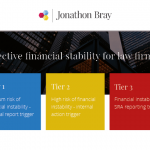Our team recently attended the Law Society webinar “Playing by the price transparency rules – how do I make my website compliant and stand-out from the competition?”
In this post we focus on Natalie Darby’s segment – making a website compliant. As Policy Manager at the SRA, she spoke about the recent ‘web sweeps’ of hundreds of firms websites that have been undertaken over recent months to assess how the rules have been implemented.
Please contact us for a copy of the slides.
What areas of law are covered by the SRA Transparency Rules again?
Pricing MUST be available for firms who undertake the following areas of work:
- Conveyancing (residential)
- Motoring offences (summary offences)
- Probate (uncontested)
- Immigration (excluding asylum)
- Employment tribunals (unfair/wrongful dismissal)
- Debt recovery (up to £100,000)
- Licencing applications (business premises)
Key points of the Law Society webinar
Ms Darby was keen to give her 6 ‘take-aways’ of what firms need to be doing. Here is our summary:
- Charging basis – as the rules are deliberately not prescriptive, this information could be given as a total, a range or an average. By ‘basis’, firms are required to state how they charge, e.g. hourly rate or fixed fee.
- Credentials – firms need to ensure they state who carries out the work. They should list both their qualifications and their experience.
- Disbursements – there is an acknowledgement that these can be unknown and so given in general terms / likely cost is fine.
- VAT – be clear! Firms must state the rates (i.e. not just state ‘plus VAT’ but ‘plus VAT charged at a rate of 20%’ – or whatever is relevant in that case).
- Location – firms should ensure that they find the right location on their website for their price information. It should be accessible. It was acknowledged that ‘accessible’ has not been defined but would mean easily found and signposted from the homepage.
- Complaints – all firms are required to publish information about how they will deal with complaints, including: (a) their own process and who to contact; (b) how to complain to the Legal Ombudsmen (LeO) including their contact details; and (c) how to complain to the SRA including their contact details.
A couple of points noted during this part of the webinar:
- recent research of consumers has shown that the public judge quality – so ensure credentials are detailed. And ensure that anyone carrying out the work is listed (including paralegals – maybe with reference to the fact that they are working under supervision and all work is carefully monitored by a senior).
- don’t assume potential customers know what basic terms mean – try and explain the legal jargon (e.g. key terms like disbursements, conveyancing – very familiar within the legal sector, can be a deterrent for many. Think TRANSPARENCY – the point was to make the legal sector more accessible! Make websites customer friendly when writing them.
- in the web sweeps, the main thing missing from firm websites was Complaints Information. There is support and guidance about this on the SRA website, including ‘cut and paste’ wording if firms are struggling.
- not every firm has a website. Whilst this is not a problem, the transparency information should be readily available upon request in another format. Furthermore, it should not be expected for a potential customer to provide detailed information in order to receive it.
Price and service transparency isn’t going away, so all firms need to take this seriously.








